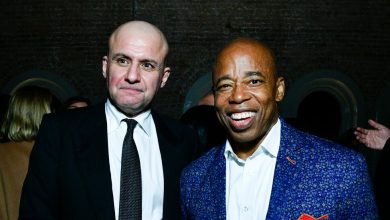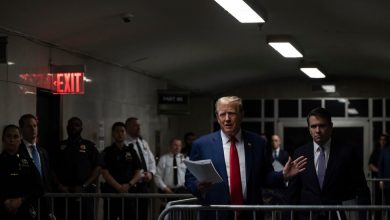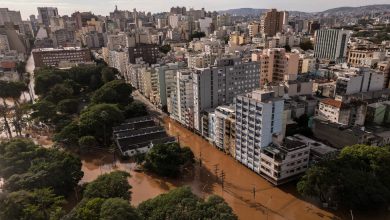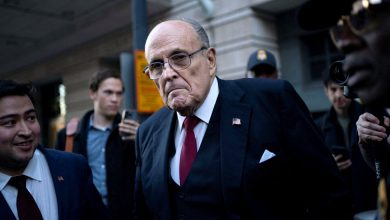Gandhi’s Life in Photos, 75 Years After His Assassination
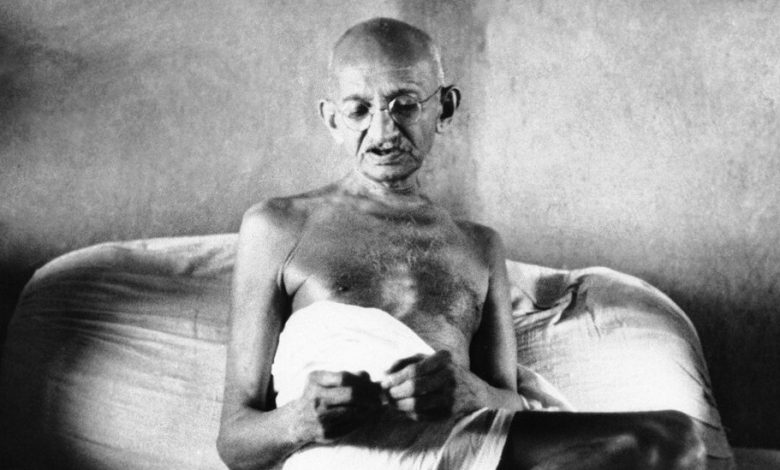
Seventy-five years ago, Mohandas K. Gandhi was shot dead by an assassin while on his way to deliver a regular evening prayer. Gandhi, by then largely known as the mahatma, or “great soul,” had helped lead India into its independent future less than a year before, with millions of Indian nationalists by his side. He died as one of the most celebrated men on earth.
“The light has gone out of our lives,” Jawaharlal Nehru, the first prime minister of independent India, told the weeping masses by radio on Jan. 30, 1948, the day of the assassination.
In his famous, impromptu elegy, Nehru promised that the light brought by Gandhi would “illumine this country for many more years. And a thousand years later, that light will be seen in this country and the world will see it and it will give solace to innumerable hearts.”
Gandhi is still revered far and wide, his name a byword for a certain kind of virtue and action. Nearly every town in India’s countryside has a main street named “M.G. Road” in his honor, and some of the biggest government programs of the 21st century bear his name, too. But India has changed in innumerable ways since 1948, when his life was snuffed out by Nathuram Godse, a Hindu ideologue with a Beretta pistol.
Mr. Godse had murdered Gandhi as a political enemy, accusing him of being a traitor to Hindus. Mr. Godse was a Hindu nationalist, who loathed what he saw as Gandhi’s deference to minorities and resented the division of colonial India between an explicitly Muslim Pakistan and a multireligious, secular (though Hindu-majority) republic of India. Narendra Modi, the popular and increasingly powerful prime minister of the past eight years, has roots in the same Hindu nationalist movement. Members of his party have been caught celebrating Mr. Godse — and rebuked for it — but have then been allowed to stay in Parliament.
Mr. Modi praises Gandhi at ritually appropriate occasions, but there is relatively less veneration for Gandhi in India’s public spaces now.
Today’s India is much prouder of its industrial and military achievements than Gandhi might have liked, and it is eager for more. Mr. Modi’s messaging suits that mood better. Still, Gandhi’s commitments to an independent and self-sufficient India, his wit and steely resolve and his ability to mix aspects of spiritual leadership with political continue to command respect.
As India evolves and finds its stature ever greater on the world stage, The New York Times pored over archival photographs to look back at those years of light that Gandhi brought to his countrymen and to the world. Here is a selection.
In the first of these images, Gandhi, right, is pictured with his brother Laxmidas Gandhi in 1886 in India. In the second photograph, he is in the center, in South Africa, where he was practicing law.
Gandhi addressing a farewell gathering in South Africa in 1914 before going to Britain and later to India in 1915. It was around this time that the honorific “mahatma” or “great soul” was first applied to him.

Credit…Dinodia Photos, via Getty Images
Gandhi in 1924 with Indira, the daughter of Nehru, who was prime minister after India gained independence in 1947. She would later also serve as the country’s prime minister, known by her married name, Indira Gandhi. (She was not related to Mohandas K. Gandhi and was herself assassinated, in 1984.)
Gandhi in 1930 at the start of the protest that became known as the Salt March. Over several weeks, he and his followers walked some 240 miles from his religious retreat on the Sabarmati River in Gujarat to the coast at the town of Dandi, urging Indians to defy colonial laws taxing salt and restricting its production. The march ignited a major campaign of civil disobedience, and focused international attention on Gandhi and his advocacy of satyagraha, or nonviolent resistance.
Crowds gathering to hear Gandhi speak next to the Sabarmati River in the early 1930s.
Workers during a labor strike in the 1930s as the movement to end Britain’s colonial rule grew stronger. Tens of thousands were jailed over the Salt March or related protests, including Gandhi himself.
Gandhi breaking a fast after being released from prison. He fasted many times, including to protest colonial rule and Britain’s treatment of Indians who stood against it.
Gandhi meeting with Generalissimo Chiang Kai-shek of China in India. Battling an invading Japan in the 1930s and ’40s, Chiang sought to enlist Gandhi’s support for his war effort.
Gandhi arriving in Marseille, France, in September 1931. During his trip to Europe, he also traveled to London to discuss colonial India’s future.
While in Britain, Gandhi attended the Round Table conference in London and met with King George V and Queen Mary at Buckingham Palace.
Crowds gathered on London streets as Gandhi visited the East End, where he called attention to the area’s poor by forsaking a hotel and staying at a community house.
While in East London, Gandhi met with Charlie Chaplin, to his right. Chaplin wrote that it was the meeting with Gandhi that inspired him to make “Modern Times,” which depicted the dehumanizing effects of mass production.
Gandhi alongside other national movement leaders in 1931 dictating his terms of peace with Britain in the civil disobedience campaign begun by the Salt March. The deal called for the release of political prisoners.
Gandhi, center, and Nehru, left, in Bombay, now known as Mumbai, in December 1931. Nehru’s political skills complemented the spiritual appeal of Gandhi to bring India’s struggle for freedom to a successful conclusion.
Gandhi leaving a jail housing political prisoners in Calcutta, now known as Kolkata, in 1938 as part of negotiations to secure their release.
Gandhi during a fast in 1939 that ended when the viceroy of India agreed to the release of political prisoners.
Gandhi leaving the home of Muhammad Ali Jinnah, left, the leader of the Muslim League, in New Delhi in November 1939. Jinnah went on to become Pakistan’s founding father.
Gandhi, fourth from the right, on his daily walk in 1946, with his aides and family members. Gandhi would typically walk several miles a day.
Gandhi in 1946, next to a spinning wheel. The charkha became a symbol of Indian resistance to Britain’s textile-based mercantilism and British rule generally.
Gandhi meeting with Lord Mountbatten, the new viceroy of India, and his wife, Lady Edwina Mountbatten, in 1947. It was the homestretch for colonial rule: India would be independent, and the viceroys no more, within the year.
Growing unrest between Hindus and Muslims exploded into riots before India’s independence in 1947, along with its partition into India and Pakistan, leading Jinnah and Gandhi to jointly appeal for peace.
Gandhi, center, visiting a camp for Muslim refugees at the Purana Qila in New Delhi. The refugees were preparing to leave India for Pakistan in September 1947, a month after both countries gained independence from Britain.
Gandhi at Birla House in New Delhi on Jan. 29, 1948, the day before his assassination. He had made the site, formerly the residence of one of India’s biggest industrialists, into his base in the capital.
After the assassination, Gandhi’s grandniece placed petals on his head as his body was lying in state at Birla House.
Gandhi was cremated on the banks of the Yamuna River.
Crowds lined the railway tracks to pay homage as some of Gandhi’s ashes were carried by train to the Ganges River to be scattered.
The spot where Gandhi fell.

